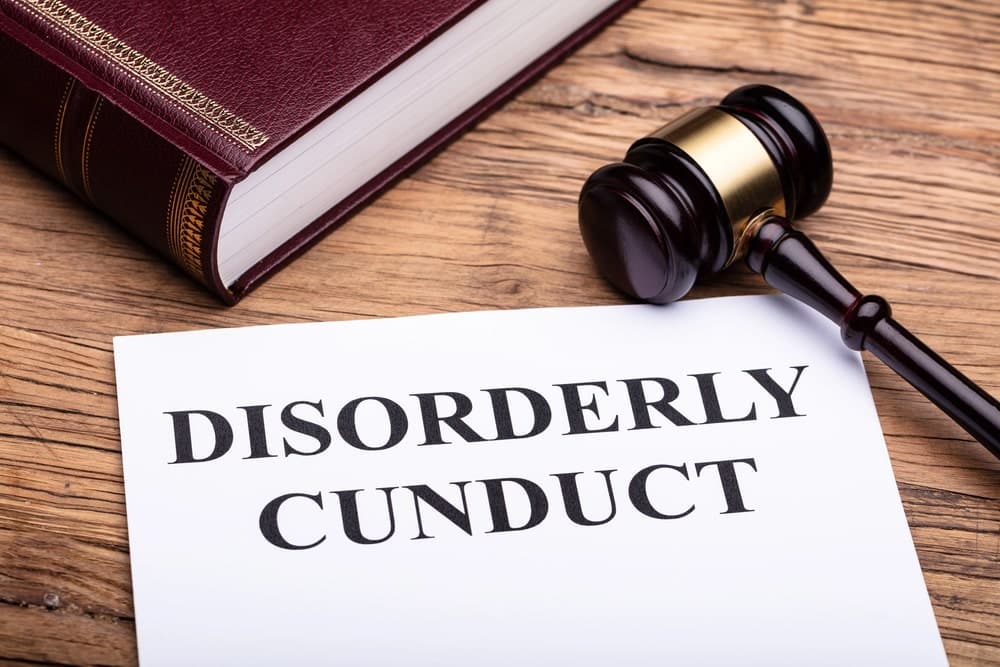However, the major differentiator between state and federal court is the practice of referencing the Federal Sentencing Guidelines when determining a sentencing range in federal court.
Call 207-571-8146 or contact us online to schedule a consult with one of our highly skilled criminal defense & OUI lawyers, serving Southern Maine, today.
Table of Contents
Criminal History Category Calculation
The first issue that determines the punishment imposed by the court in any federal criminal proceeding is the criminal history category of the defendant. There are 6 levels of criminal history categories. The criminal history category is determined by the defendant’s prior criminal record and the severity of each prior conviction (IE, misdemeanor, felony, serious drug charge or crime of violence). Each conviction is assigned a point level and when all the points are totaled, the criminal history category is calculated as follows:
- Category I – 0 or 1
- Category II – 2 or 3
- Category III – 4, 5, 6
- Category IV – 7, 8, 9
- Category V – 10, 11, 12
- Category VI – 13 or more
According to the Federal Sentencing Commission’s recommendations, the following method is used to determine the points for category determination:
- (a) 3 points for each prior sentence of imprisonment exceeding 13 months;
- (b) 2 points for each prior sentence of imprisonment of at least 60 days;
- (c) 1 point for each prior sentence not counted above for a maximum of 4 points;
- (d) 2 points added if the crime for which the defendant has been charged in federal court was committed while on probation, parole, supervised release, imprisonment, work release or escape status;
- (e) 1 point for each prior conviction of a crime of violence that did not receive any points under the first (a), (b) or (c) because each sentence was part of a single sentence.
Any sentences imposed that exceeded 13 months count for the criminal history calculation if that sentence was imposed within 15 years of the instant offense. All other sentences must have been imposed within 10 years of the instant offense in order to count towards the criminal history calculation.
In addition, sentences are calculated by determining what the maximum punishment could be imposed by the court. For example, if you were sentenced to 4 days in jail and probation on a class C felony in state court, the court would calculate the prior conviction as a 3 point conviction since the punishment maximum was 5 years in prison.
Deferred dispositions or diversionary programs are also used to calculate the criminal history category. For example, if you’re on deferred disposition for an OUI and it was dismissed following successful completion of said program, you will be hit with a 1 point conviction for the purpose of calculating your criminal history category as the US Probation Department is authorized to use any criminal charge where a plea of guilty or nolo contendre was entered.
As you can see, a criminal history category of III or higher is quite easy to reach under the Sentencing Guidelines. The higher your criminal history category is, the stiffer the term of imprisonment range under the Guidelines. For example, someone with a Criminal History Category of IV and who has a base offense level of 14 is facing 24-30 months of federal prison time. If that person had a Criminal History Category of I with the same base offense level of 14, the prison range would be 15-21 months, which is a huge difference. As the base offense levels increase, the sentencing disparity between someone with an extensive criminal history and no criminal history widens.
Call 207-571-8146 or contact us online to schedule a consult with one of our highly skilled criminal defense & OUI lawyers, serving Southern Maine, today.
Base Offense Level Calculation
In order to calculate a base offense level, one needs to determine the crime as defined in the United States Criminal Code and then look in the Federal Sentencing Guidelines for the base level offense. For example, if you’re charged with possession of child pornography, the base offense level is 22. Combine that with a Criminal History Category level V, the defendant is looking at 77-96 months in prison.
Specific Offense Characteristics
Of course, there are additional calculations wrapped up in the base offense level, which are referred to as the Specific Offense Characteristics. Using the child pornography possession scenario, the following offense characteristics would apply:
- -2 if the defendant didn’t intend to traffic in or distribute the child porn materials;
- +2 if the material involved a prepubescent minor or a minor who had not attained the age of 12 (nearly EVERY federal child porn case has this enhancement);
Apply the LARGEST of the following that applies:
- +5 if the material was distributed to a minor;
- +6 if the material was used to induce or persuade a minor to engage in prohibited sexual contact
- An example would be if the defendant promised to provide the minor with images in exchange for a sexual act
- +5 MINIMUM if the distribution is for monetary gain… apply no less than a 5 point increase but look to the retail value of the material to determine if more than a +5 increase can be supported
- +2 if the material was distributed in a manner different than what was described
- +4 if the child porn portrays sadistic or masochistic conduct
- An example would be a video where a toddler is being vaginally penetrated by an adult
- +5 if the defendant engaged in a pattern of activity involving sexual abuse or exploitation of a minor
- +2 if the offense involved the use of a computer (EVERYfederal child porn case involves the use of a computer!!!);
- +2 if 10 – 149 images
- +3 if 150 – 299 images
- +4 if 300 – 599 images
- +5 if more than 600 images of child porn
- Keep in mind that the courts calculate images based on videos as well and the calculation for determining images on a video is as follows:
- One video = 80 images
- Keep in mind that the courts calculate images based on videos as well and the calculation for determining images on a video is as follows:
As you can see, the underlying sentence can get markedly worse with all of these enhancements. So, under our original scenario that involved a defendant with a criminal history of IV and a base offense level of 22, if we assume that there were 600 or more images of child porn, that a computer was used in the commission of the crime, one or more images contained a prepubescent child, one or more images constituted sadistic or masochistic conduct, and the images were distributed on some type of shareware service, the base offense level would be bumped up to a 35, which equates to a prison sentence of 262-327 months in prison. That’s nearly 30 years in prison for a non-violent offense!
Call 207-571-8146 or contact us online to schedule a consult with one of our highly skilled criminal defense & OUI lawyers, serving Southern Maine, today.
Grounds for Lower than Guideline Recommended Sentence
Government-Sponsored Departure – 5k.1
Generally, when mandatory minimum sentences are involved, the only way to get underneath the mandatory minimum sentence is when the government makes a recommendation for departure under Rule 5k.1. These are only available in cases involving multi-defendant prosecutions, usually for large drug trafficking rings, where the defendant provided substantial information and cooperation and that information led to the arrest and successful prosecution of other defendants. Oftentimes, a defendant may even need to testify at Grand Jury or even trial in order to receive a 5k.1 departure. Again, only the government can make a motion to sentence under the guidelines and the mechanism for that is the 5k.1 letter.
Motion for Downward Departure or Variant Sentence
The Defendant is free to argue a downward departure as part of a sentencing memorandum. A motion for downward departure essentially petitions the court to impose a sentencing range that is lower than the recommended Guideline range. There are distinct and specific, acceptable reasons for why a departure should be granted. Many of these arguments are made under the category of offender specific characteristics, which include the diminished capacity of the defendant, severe medical issues, alcohol or drug addiction and others. However, the Defendant is not limited to these issues can argue that the Guideline range shouldn’t apply because they are merely advisory, with many of the mandatory enhancements operating as a punitive sanction and therefore, the Court is free to disregard those enhancements and Guidelines and may fashion their own remedy.
Grounds for Increasing the Guideline Sentencing Range
Keeping in mind that the Guidelines have been rendered as “advisory” by prevailing case law, in a few rare instances, the court will increase the guideline sentence range in extraordinary cases. Examples would be where a person has an extensive criminal history of violence that falls outside of the timeline for calculating the Criminal History Category and the crime for which the defendant is being sentenced is similar in nature, courts will sometimes increase the recommended sentence… by a substantial amount.
Contact Our Federal Setencing Experts in Maine
The Federal Sentencing Guidelines were rendered advisory by the US Supreme Court in the landmark case of Booker v. the United States. Booker, a drug trafficking case, specifically prohibits federal courts from having their sentencing discretion bound by the Commission’s “recommendations”. While the Guidelines are now considered advisory and courts are free to deviate up or down from their recommendations, the Court still must put on the record its reasons for the deviation. Therefore, a good criminal defense attorney will know precisely what the sentencing judge is looking for and what he or she finds important or trivial and emphasize or minimize those factors accordingly.
If you’ve been charged with any federal criminal offense, don’t just hire any attorney. Get in touch with The Maine Criminal Defense Group. We have the experience necessary to handle your case from pre-indictment investigation through trial and sentencing, if necessary. Contact us directly online or call us at (207) 571-8146 to request a consulation with our tenacious legal team.
Call 207-571-8146 or contact us online to schedule a consult with one of our highly skilled criminal defense & OUI lawyers, serving Southern Maine, today.
Blog Posts

If you receive a traffic ticket in Maine, you may be facing far more than demerit points or an administrative penalty. You could be facing criminal sanctions and a permanent[...]

In Maine, disorderly conduct laws effectively make disturbing the peace a criminal offense. While disorderly conduct is considered one of the least serious offenses under Maine’s Criminal Statutes, it can[...]

Any criminal charge for a drug-related offense is a serious matter in Maine,but how consequential the outcomes can get may depend on whether the charge is filed at the state[...]


Self-defense laws in the U.S. are complex, vary from state to state, and are often misunderstood. “Stand your ground” laws allow an individual to use deadly force in self-defense in[...]

Every day in Maine, people are charged with crimes that they did and did not do. Fortunately, in the U.S., we have a justice system that says you’re innocent until[...]

Expungement is the practice of legally erasing or striking out documents or information relevant to criminal charges. It’s not possible to expunge a criminal record in Maine. However, other avenues[...]

If you have been arrested or are under investigation for a crime in Maine, it is crucial to retain the services of a competent and experienced criminal lawyer. A criminal[...]

Bail Code in Maine Title 15, Chapter 105 of the Maine Revised Statutes governs all issues pertaining to bail in Maine. When a defendant has been arrested and charged with[...]

In the span of less than 5 decades, computers have utterly transformed our society. Those of the baby boomer generation will be able to appreciate the scale of this transformation[...]


